A reader has helped me identify the maker, and also the likely former (royal) owner of these beautiful and unusual pans.
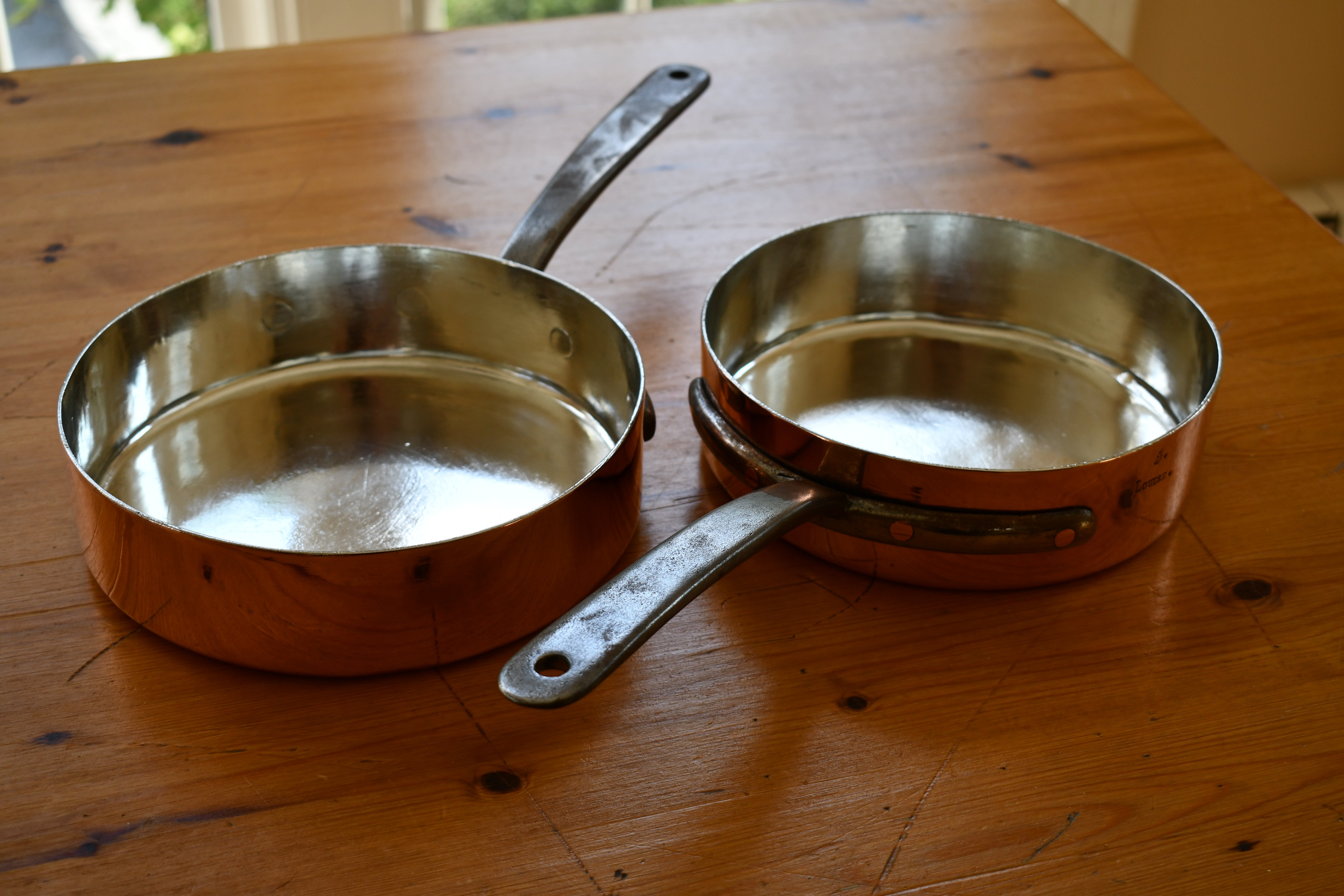
| Type | Two tin-lined sauté pans in hammered finish with iron handles fastened with four copper rivets | |
| French description | Deux sauteuses étamées et martelées avec queue de fer munies de quatre rivets en cuivre | |
| Dimensions | 19cm diameter by 5.5cm tall (7.5 inches by 2.2 inches) |
20cm diameter by 5.5cm tall (7.9 inches by 2.2 inches) |
| Thickness | 2mm at rim | 2mm at rim |
| Weight | 1214g (2.7 lbs) | 1310g (2.9 lbs) |
| Stampings | "Louise"; 5 | "Louise"; 6 |
| Maker and age estimate | A. Fauser & Sohn, Vienna, Austria; 1891-1903? | |
| Source | France, via eBay | |
(This post has been revised in January 2020 with newly acquired information about its maker.)
I am working to develop an eye for French copper craftsmanship and I've come to believe that it represents an aesthetic sensibility that is distinct from pans made elsewhere in Europe and in America. One of the areas where this manifests most clearly is in the baseplates of iron handles. I knew at a glance that these pans were not French; it took a reader to help me figure out their maker. I now know that they're the work of A. Fauser & Sohn, hof-kupferschmeide (court coppersmith) in Vienna, Austria in the late 19th century.

Compare their style to conventional French, English, and American handles from the 19th and early 20th centuries. During this era, the craftsmen in these different regions adopted a recognizable style: English pots tended to arrow-shaped baseplates; American pots had rectangular baseplates; and French baseplates had a rounded shape. This is a rough generalization and of course there are variants, but there is overall a common aesthetic.

(The photo above is borrowed from a pretty good post on Serious Eats, The Pros and Cons of Copper Cookware.)
But the handles of these pots with their skinny, wide-spread, four-rivet baseplates seem to mimic an older style. In the absence of the forges and molds for iron casting, pot handles were made from flattened rods of iron that were cut and beaten into shape. You can find these handles on European and American Colonial copper from the 1700s and early 1800s, an era sometimes called "primitive."
Here are several of examples. A couple of these could be early French, but the majority are likely Colonial American.
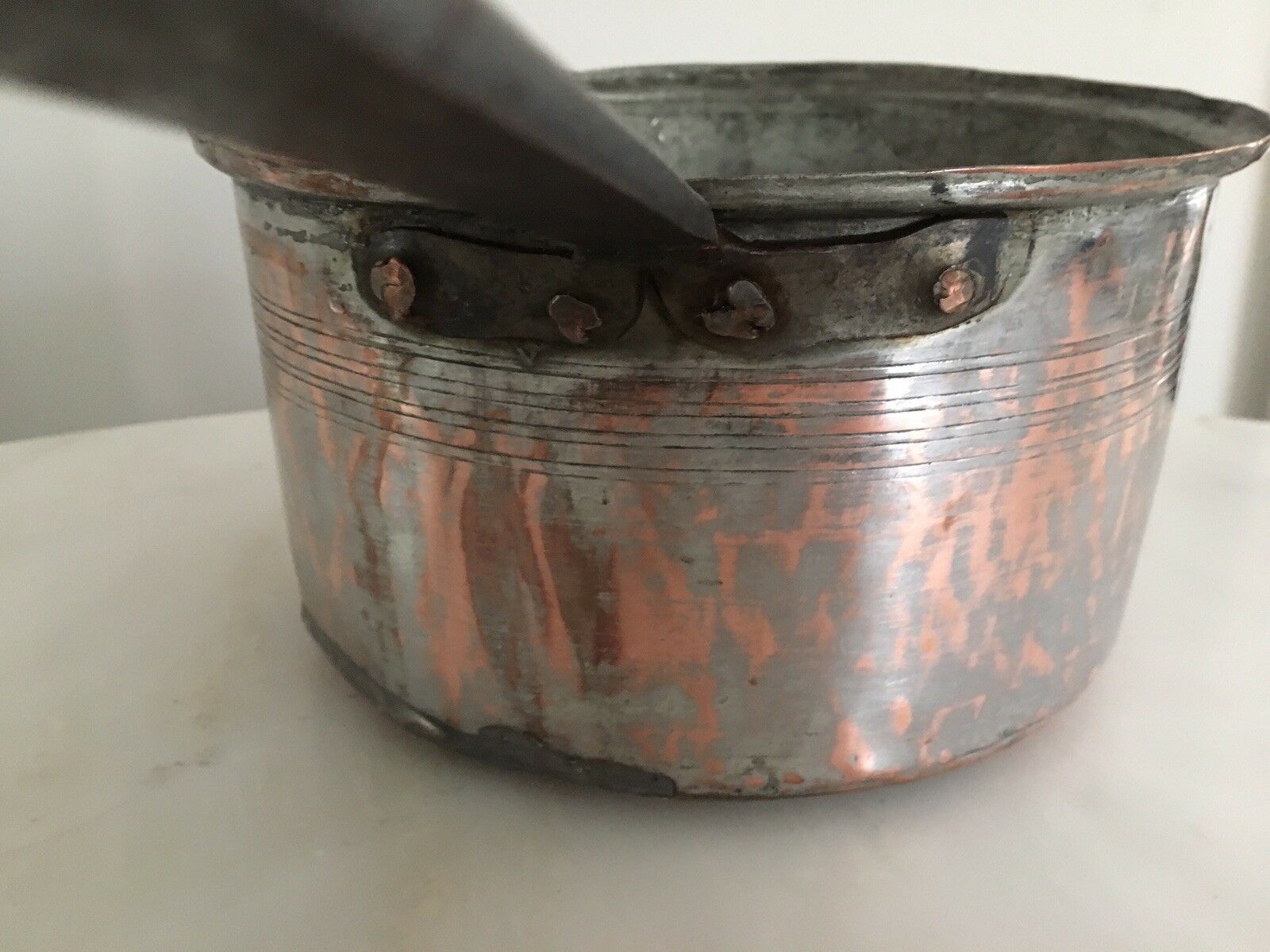
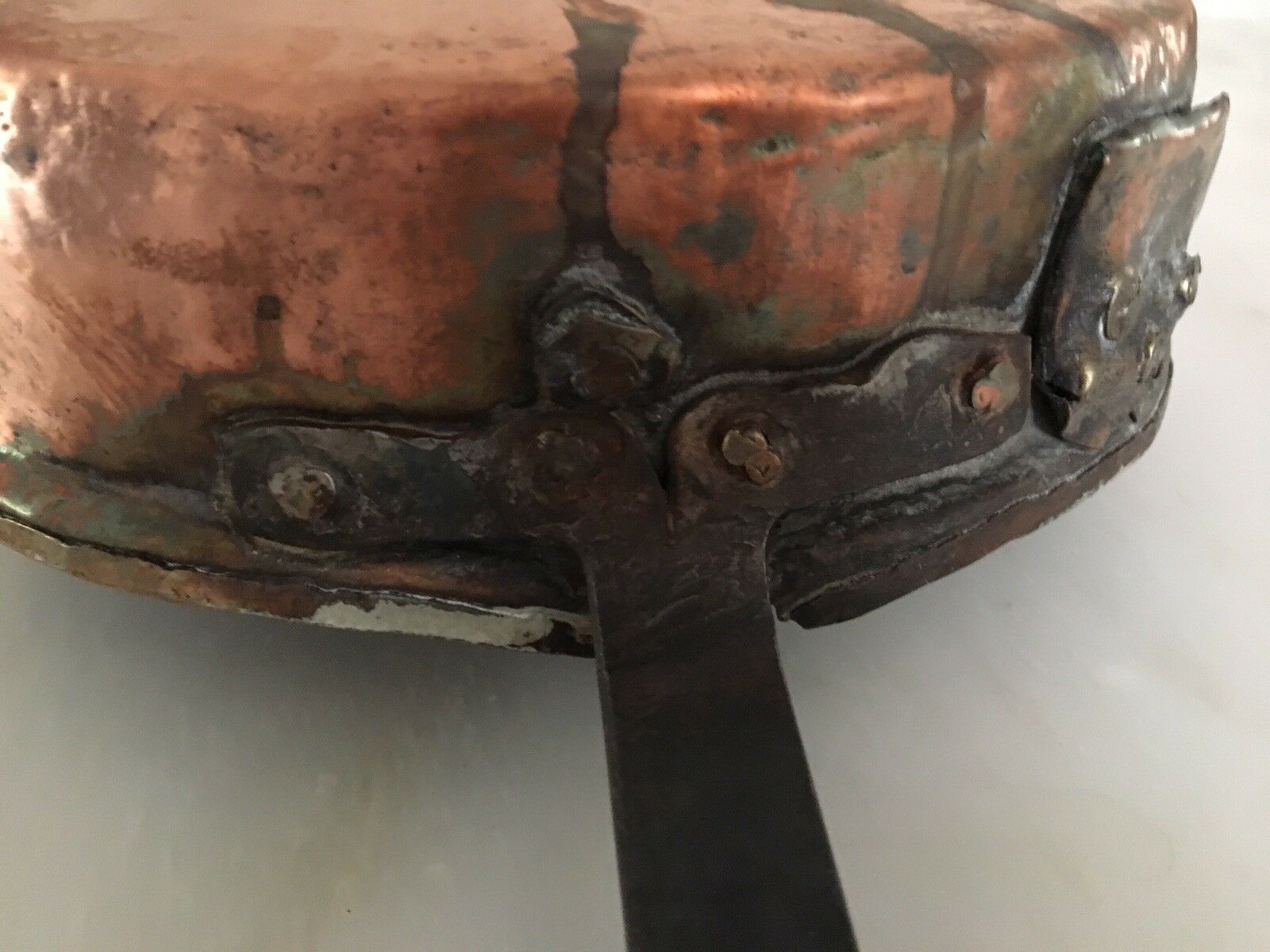



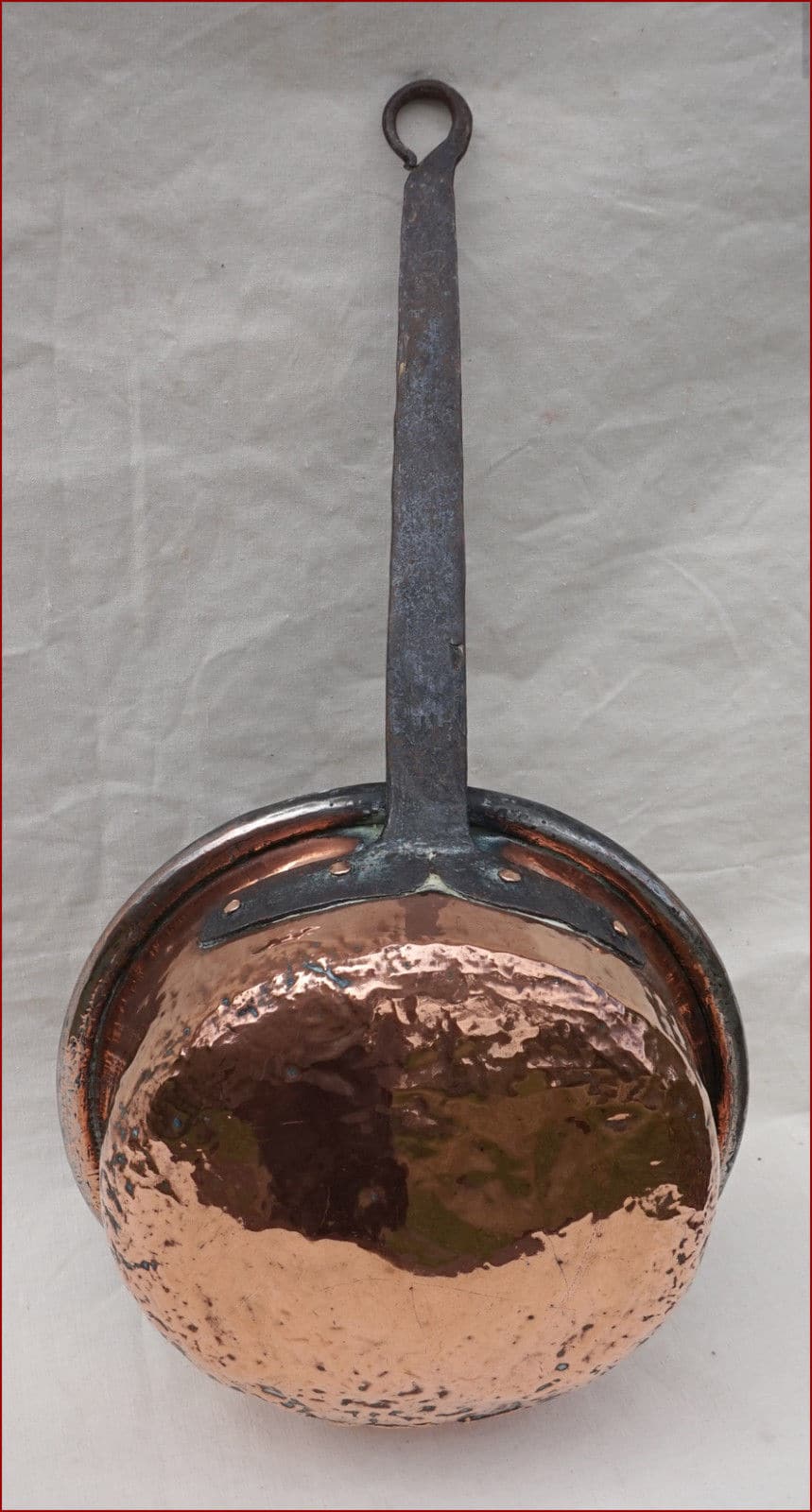


Compare the pans above to mine, whose handles were cast into shape, not wrought. I am neither metallurgist nor smith so I cannot speak to how the baseplate was joined to the projecting handle, but they look to be one piece. The seam between base and handle -- if there is one -- is quite subtle. Perhaps a reader with more experience can provide an opinion: were these handles cast as one piece, or two pieces joined together?




The finished effect is far more refined than the other spread-handled pots. The external rivets are absolutely flush with the contours of the iron handle surface. The circular hanging loop is neatly punched, not formed with a curl of metal. To my eye, these handles look almost modern -- simple, yet beautiful and substantial, such as you'd find in the kitchen of a mid-20th century house, perhaps something designed by Frank Lloyd Wright.


But the other parts of the pans tell a different story. The interior rivets are fully flush with the surface, the kind of work I see on 19th century pans from Gaillard, Dehillerin, and Mauviel-Gautier Frères -- hand-cut, hand-inserted, and hand-finished rivets. The industrial revolution brought steam-powered and then hydraulic-powered machines at the end of the 19th and early 20th century with enough force to cut and drive metal rivets, but until then, it was men with hammers. And these are hand-hammered rivets.


Then there's the dot. Both pans have it: a pinprick at the geometric center of the base where the coppersmith used a compass to mark the center of the circle he would cut to form the pot. This step of hand-craftsmanship fell by the wayside when powered machinery made it faster and safer to punch shapes out from sheet metal. The dot tells me that these pans were hand-cut, and possibly even hand-balanced -- more 19th century techniques.


I was at a loss to identify the maker of these pans until reader Arndt S. in Germany responded to a separate post about a similar pan asking for help with its apparent maker stamp. Long story short, pans with these distinctive handles were made by A. Fauser & Sohn in Vienna. I don't know much about this coppersmith except that they were listed in 1899 as an official supplier to the royal court of Austria.
That date and designation suggests an explanation for the stamps on these pieces. Each pan has two stamps: a number (5 or 6) and the word "Louise."


In my experience, a number stamped on a piece of French copper is a hint to its era. A single-digit number is usually a reference number to match a pot to the lid that was made for it, while a double-digit number is the pan's diameter in centimeters; the former is more common in 19th century pans that were made with custom-fit lids, while the latter became prevalent in the 20th century when pans and lids were made separately to standardized dimensions. The single-digit numbers on these pans are reference numbers, not sizes, and lead me to consider them 19th century objects.
 The word "Louise" and the fact that A. Fauser was a supplier to the royal court of Austria suggests a potential prior owner: Archduchess Louise of Austria. She was born in 1870 in Austria to the Grand Duke of Tuscany and married Frederick Augustus III of Saxony in 1891. They were divorced in 1903 after her scandalous affair with her children's French tutor came to light (her life story is quite a tale) and her fortunes never truly recovered. I suspect these pan would have been made between 1891 and 1903, which fits with the activity period of A. Fauser and with the 19th century craftsmanship I see in these pans.
The word "Louise" and the fact that A. Fauser was a supplier to the royal court of Austria suggests a potential prior owner: Archduchess Louise of Austria. She was born in 1870 in Austria to the Grand Duke of Tuscany and married Frederick Augustus III of Saxony in 1891. They were divorced in 1903 after her scandalous affair with her children's French tutor came to light (her life story is quite a tale) and her fortunes never truly recovered. I suspect these pan would have been made between 1891 and 1903, which fits with the activity period of A. Fauser and with the 19th century craftsmanship I see in these pans.
I extend my sincere thanks to Arndt S. for helping me to connect these pans to A. Fauser & Sohn and to identify the possible provenance of these pans. I was drawn to them for their beauty -- the possibility that they could have belonged to such an interesting woman is an extra bonus!
I also want to recognize the work of Erik Undiks at Rocky Mountain Retinning to restore these pans. They were in fairly good shape but needed to be put back in round and given a good cleaning and new lining. Erik's skill with refurbishing and retinning is unmatched.



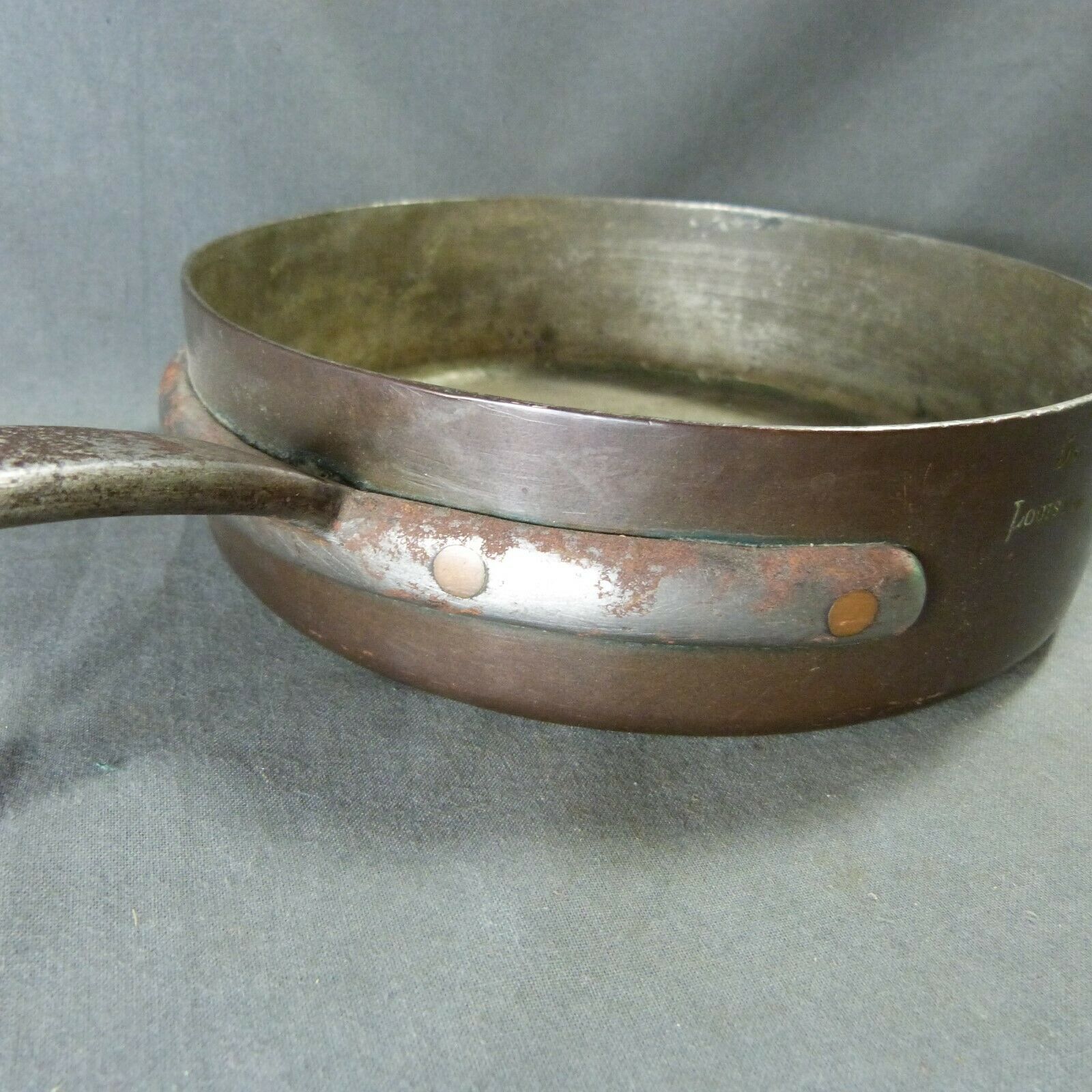

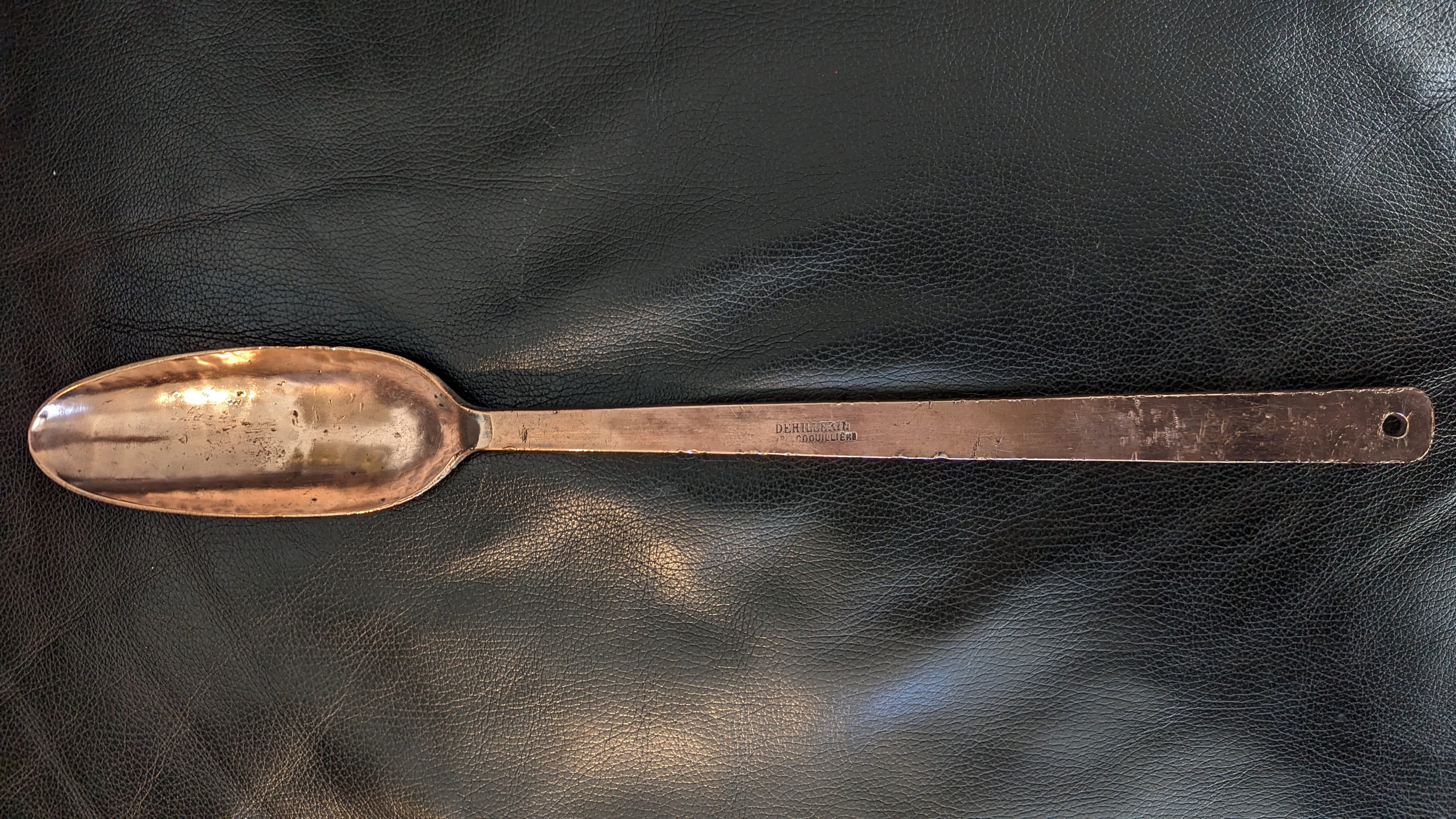

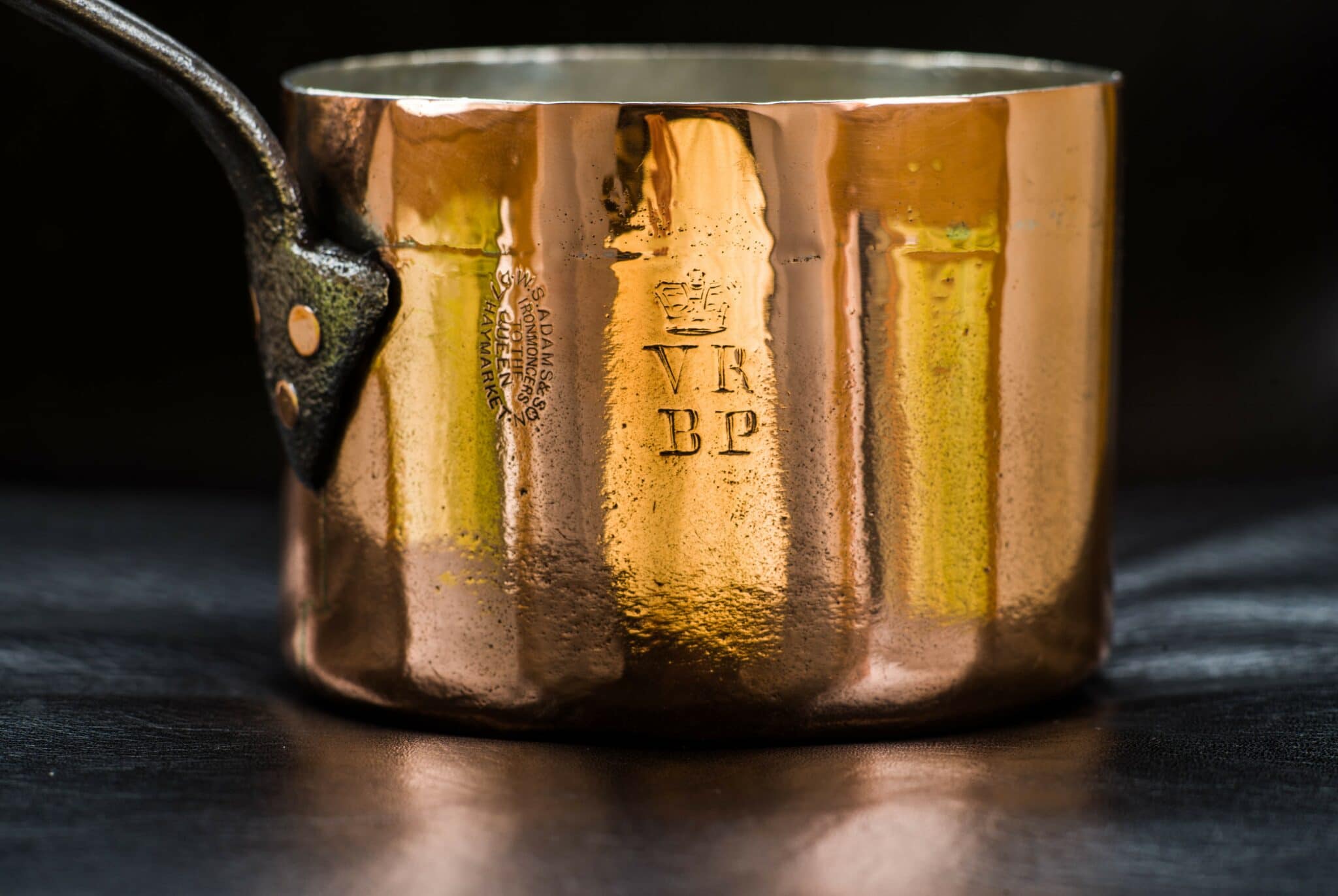

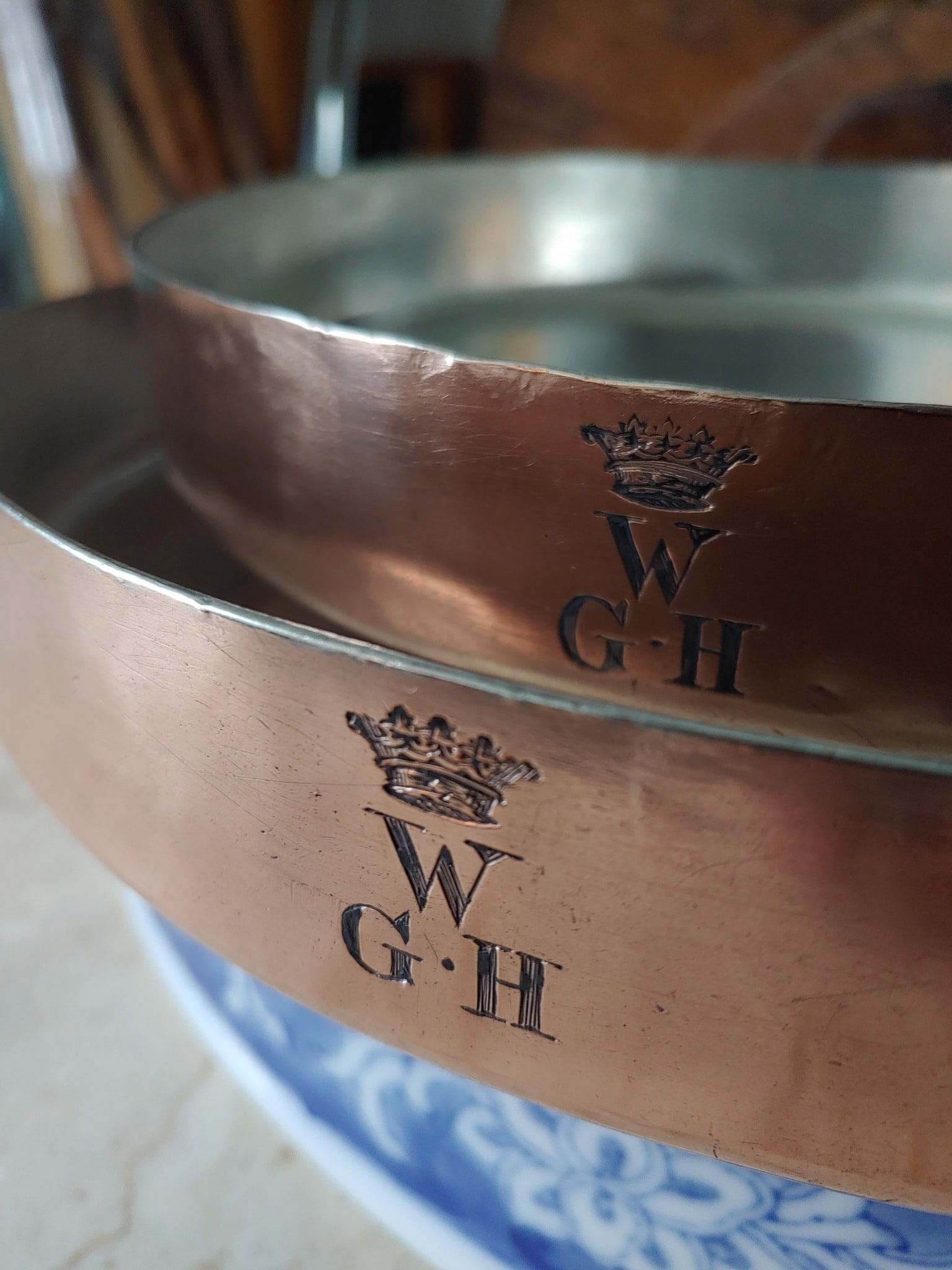
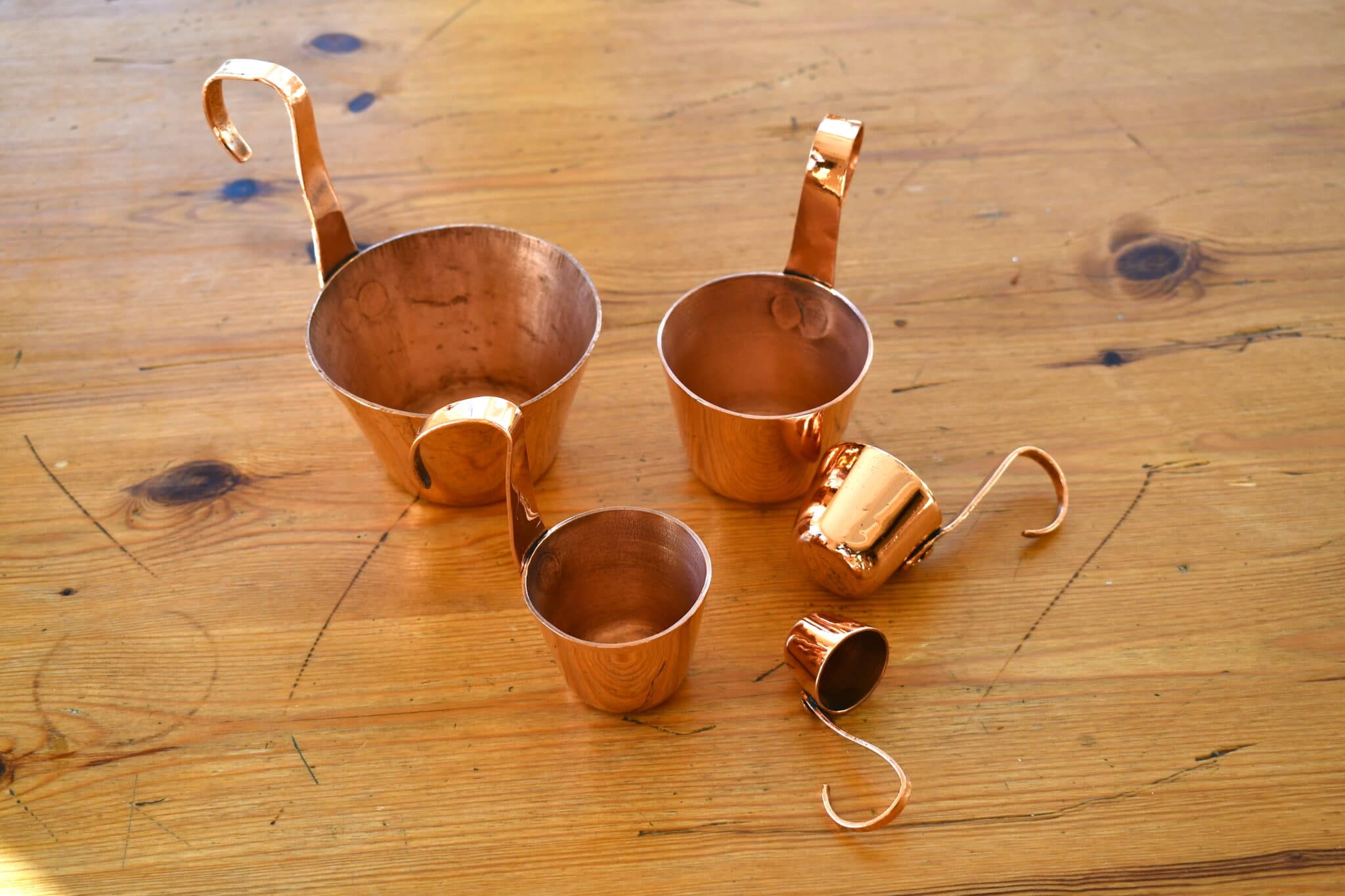
SO interesting, thank ou very much for the time you spent detailing with pictures. I have learn a lot from you.
Starting this week I am officially collecting copper. I want only Magasin du Louvre pots and pans (which I cant find here in Italy) Good thing we have internet to help.
Today I have bought 4 Italian pieces to use in the kitchen. Ciao
Sylvie, I think it’s a great idea to start a collection with a theme, and the Grands Magasins du Louvre pieces are just lovely. Have a wonderful time with the hunt — it’s so fun!